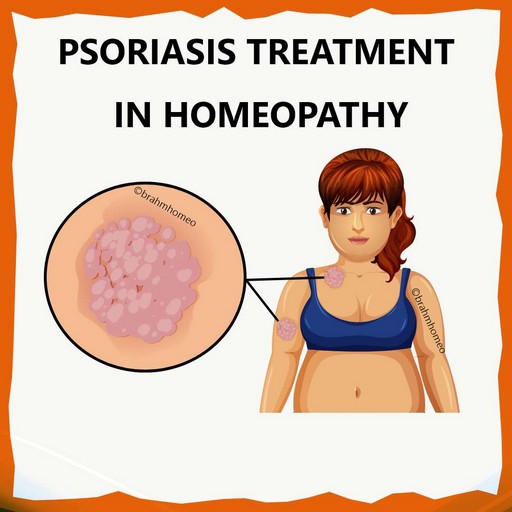
Psoriasis treatment in homeopathy
Psoriasis is a noncontagious, chronic skin disease that produces plaques of thickened, scaly skin. The dry flakes of silvery-white skin scales result from the excessively rapid proliferation of skin cells. Psoriasis is fundamentally an immune system problem. Psoriasis commonly affects the skin of the elbows, knees, and scalp.
The spectrum of this autoimmune disease ranges from mild with limited involvement of small areas of skin to severe psoriasis with large, thick plaques to red inflamed skin affecting the entire body surface.
Psoriasis can be seen in people of any age, from babies to seniors, most commonly patients are first diagnosed in their early adult years. The self-esteem and quality of life of patients with psoriasis is often diminished because of the appearance of their skin.
Signs and symptoms
The dry flakes of silvery-white skin scales
Itching , painful skin
Sometimes pulling off one of these dry white flakes of skin causes a tiny blood spot on the skin.
Causes
A combination of elements, including genetic predisposition and environmental factors, are involved. It is common for psoriasis to be found in members of the same family. Defects in the immune system and the control of inflammation are thought to play major roles. Certain medications like beta-blockers have been linked to psoriasis.
Different types of psoriasis
There are several different forms of psoriasis-
1- plaque psoriasis or psoriasis vulgaris (common type),
Plaque psoriasis appears as red or pink small scaly bumps that merge into plaques of raised skin. Plaque psoriasis classically affects skin over the elbows, knees, and scalp and is often itchy. Although any area may be involved, plaque psoriasis tends to be more common at sites of friction, scratching, or abrasion. Sometimes pulling off one of these small dry white flakes of skin causes a tiny blood spot on the skin.
2- guttate psoriasis (small, drop-like spots)
Guttate psoriasis appears as bumps or small plaques of red itchy, scaling skin that may appear explosively, affecting large parts of the skin surface.
3- inverse psoriasis (in the folds like of the underarms, navel, groin, and buttocks)
In inverse psoriasis, genital lesions, especially in the groin and on the head of the penis, are common. Psoriasis in moist areas like the navel or the area between the buttocks (intergluteal folds) may look like flat red plaques without much scaling.
4- pustular psoriasis (small pus-filled yellowish blisters).
pustular psoriasis rapid onset of groups of small bumps filled with pus on the torso. Patients are often systemically ill and may have a fever.
5- Erythrodermic psoriasis appears as extensive areas of red skin often involving the entire skin surface. Patients may often feel chilled.
 Diagnosis
Diagnosis
- In most cases, your doctor will be able to diagnose psoriasis by examining your skin
- Biopsy of skin if needed
Psoriasis is curable with homeopathy. Since how long you are suffering from disease, has to do a lot with treatment plan. No matter, since when are you suffering from your disease either from recent time or since many years -everything is curable with us but in early stage of disease, you will be cured faster. For chronic conditions or in later stage or in case of many years of suffering, it will take longer time to be cured. Intelligent person always start treatment as early as he /she observe any sign and symptom of this disease, so immediately contact us as soon as you observe any abnormality in you.
How we work on this disease
Brahm research based, clinically proved, scientific treatment module is very effective in curing this disease. We have a team of well qualified doctors who observe and analysis your case systematically, record all the signs and symptoms along with progress of disease, understand its stages of progression, prognosis and its complications. After that they clear you about your disease in details, provide you proper diet chart [what to eat or what not to eat], exercise plan, life style plan and guide you about many more factors that can improve your general health condition with systematic management of your disease with homeopathic medicines till it get cured.


















